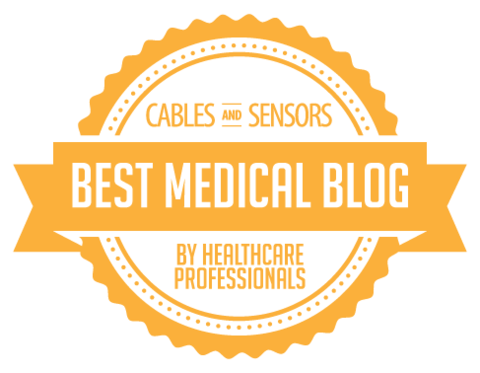2010 Dietary Guidelines to Implement
 On January 31, 2011 the 2010 Dietary Guidelines for Americans was released. This is the 7th edition of the Dietary Guidelines for Americans, which are the federal governments evidence-based nutritional guidelines to promote health, reduced chronic disease risk, and decreased prevalence of overweight and obesity through improved nutrition and physical activity.
On January 31, 2011 the 2010 Dietary Guidelines for Americans was released. This is the 7th edition of the Dietary Guidelines for Americans, which are the federal governments evidence-based nutritional guidelines to promote health, reduced chronic disease risk, and decreased prevalence of overweight and obesity through improved nutrition and physical activity.
Here are three clear steps you can implement now to promote heart health today.
1. Calories in equal calories out.
5 Reasons to Exercise

Exercise, especially aerobic exercise, is beneficial for your cardiovascular system.
Here are 5 reasons to add physical activity to your everyday routine:
1. Decrease risk for breast and colon cancer
A study has found a 35% reduced risk of getting breast cancer in women who are regularly active. Physical activity also increases survival rate in women diagnosed with breast cancer. The Harvard Nurses’ Health Study shows walking three to five hours each week to decrease risk of death 50 percent. Physical activity has also been linked to reduced risk for colon and rectal cancers.
2. Increase your life span
Lower Blood Pressure – Avoid These 7 Foods
With high blood pressure it’s important you follow a diet low in sodium and low in fat (particularly saturated and trans fat).
Here are 7 foods to avoid:
1. Pickles
Pickles are low calorie, which is great. However, they are loaded with sodium. One medium pickle (~5 inches long) can have around 570 mg of sodium. That’s over 1/3 of your sodium limit (1500 mg) for the day.
2. Canned Chicken Noodle Soup
I know, the thought of chicken noodle soup sounds warm and comforting . . . but beware! A one cup serving can contain up to 880 mg.
3. Sauerkraut
It’s a low calorie and a great way to add vegetables to a bratwurst, right? Nope. A half cup may only have ~13 calories, but it also provides you over 460 mg of sodium.
4. Fast Food French Fries
Yes, many fast food chains are now frying their fries up in trans fat free oil (but not all!); French fries still provide a large dose of fat and sodium. A medium serving of fries provides ~19 grams of fat and 270 mg of sodium.
5. Bacon
I don’t really count this as a meat. It’s mostly fat with three slices carrying 4.5 grams of fat and ~270 mg of sodium. Opt for lower sodium varieties and try turkey bacon instead of pork. Even with these switches bacon should remain a “special treat” not an everyday indulgence.
6. Whole Milk
Dairy is a great source of calcium, but high fat dairy sources provide more fat than you need. A one cup serving of whole milk provides 8 grams of fat, 5 of which are saturated.
7. Frozen pot pies
A single pot pie equals a serving of ~1300-1400 mg of sodium PLUS ~35 g of fat. The fat includes trans fat which you want to eliminate from your diet completely and an unhealthy dose of saturated fat. Clear out your freezer.
Be sure to sign up for the free e-course 7 Natural Ways to Lower Blood Pressure at http://lowerbloodpressurewithlisa.com.
All the best,
Lisa Nelson RD
https://lisanelsonrd.com
Do you need D-Ribose?
 Every cell in the human body slowly produces d-ribose. Liver, fat tissue, and adrenal glands produce the highest levels to meet the production needs of hormones and fatty acids. Heart, brain, nerve, and skeletal muscle only make enough d-ribose to manage day-to-day needs during a normal state of health.
Every cell in the human body slowly produces d-ribose. Liver, fat tissue, and adrenal glands produce the highest levels to meet the production needs of hormones and fatty acids. Heart, brain, nerve, and skeletal muscle only make enough d-ribose to manage day-to-day needs during a normal state of health.
The body is not able to produce high levels of d-ribose quickly when under levels of stress, such as oxygen and blood deficiency connected to heart disease. Any time oxygen or blood flow is compromised the body tissues are not able to produce adequate levels of d-ribose, which leads to a depletion of cellular energy.
D-Ribose Deficiency
Characteristics of individuals at increased risk for a d-ribose deficiency include men and women over the age of 45 showing early signs of cardiac dysfunction, statin drug users, women with mitral valve prolapse, and individuals with high blood pressure and/or heart disease.
D-Ribose Benefits
Will Wal-Mart be the 'new' health food store?
 Wal-Mart has recently agreed to offer healthier food options. Over the next 5 years Wal-Mart will be making changes to reduce the salt, fat, and sugar content of its ‘Great Value’ brand of packaged foods. This healthy move will also include lowering the price on healthy fruits and vegetables.
Wal-Mart has recently agreed to offer healthier food options. Over the next 5 years Wal-Mart will be making changes to reduce the salt, fat, and sugar content of its ‘Great Value’ brand of packaged foods. This healthy move will also include lowering the price on healthy fruits and vegetables.
Wal-Mart announced this decision in Washington D.C. alongside First Lady Michelle Obama who has made healthy eating and physical activity her top priorities.
This is great news for families trying to make ends meet on a tight budget. It’s hard to select healthy foods when pricing makes unhealthy options more budget friendly.
Does this affect you?
Top Weight Loss Tips for 2011
If you are like many people across the US it’s a new year and you are thinking about tackling diet and lifestyle changes to lose weight and be healthy.
Here are two top weight loss tips for you to implement this year:
1. Create an action plan.
It takes more than setting a goal to actually achieve your goal. You need to outline a plan of action. This means writing down specific steps you have to take and when/how you are going to take them to ensure you your success.
2. Be realistic.



